Detours worth taking on your next road trip
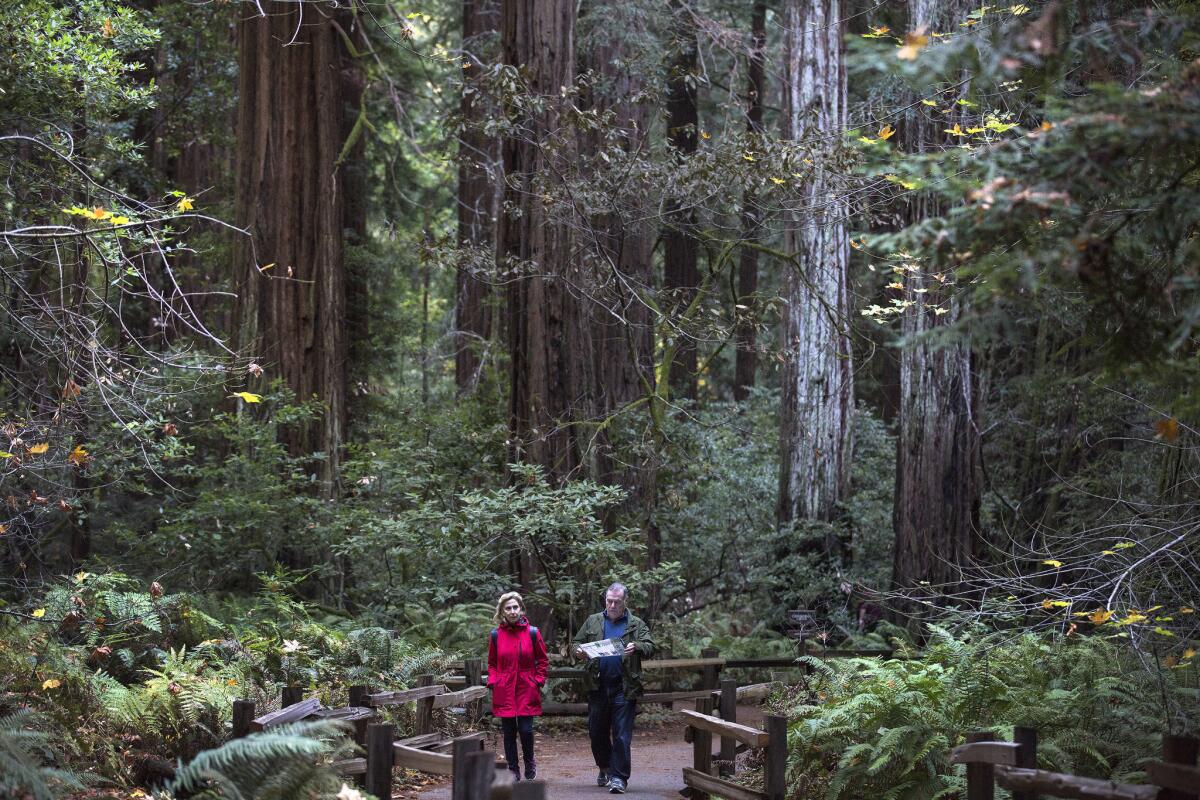
Moody Marin County
The route: From San Francisco, take U.S.101 north over the Golden Gate Bridge to the California 1/Stinson Beach exit. Take Shoreline Highway to Panoramic Highway to California 1 and Stinson Beach. Head south on California 1 to Muir Beach, then east to the 101.
Miles: The loop around and over Marin County’s Mt. Tamalpais is about 25 miles; add 20 miles more starting from the San Francisco city center.
Best time: Spring and fall are best; summer can be crowded.
Why: Northern California at its moody best. You’ll ascend from sea level through grassy hills into dense redwood forests and back down to rugged beaches. There are spectacular views of San Francisco Bay and the Pacific (and often, a sea of fog rolling in).
Highlights: Stop at Muir Woods National Monument to hike through a forest of towering coast redwoods. (Parking reservations are mandatory.) At 6,300 acres, Mt. Tamalpais State Park surrounds Muir Woods. The park has 60 miles of trails, and there are stunning vistas from Mt. Tam’s 2,500-foot-high peak. Picnic at Stinson Beach, then surf or fish. Stop at Muir Beach, a quiet, wind-whipped cove, and take the pedestrian bridge from the parking lot to the beach. With luck, you’ll spot migrating whales, monarch butterflies and nude sunbathers.
Memorable stay: The Pelican Inn in Muir Beach, a whitewashed English Tudor with aged wood floors and antiques, has seven small rooms with canopy beds and is a charming stop a block from the beach. If you’re the outdoors type, pitch a tent at the Bootjack or Pantoll campgrounds on Mt. Tam.
Memorable meal: Parkside in Stinson Beach includes a cafe, fast-food snack bar and espresso kiosk. We had a good but expensive lunch at the cafe: a burger on a brioche bun with fries ($17) and fish and chips ($24), followed by ice cream cones ($2.50 each) outside at the snack bar.
Tourist trap or treat: Hoist a brew or have lunch at the Pelican Inn’s bar. This tiny, authentic British pub is a treat and features hearty English fare such as Guinness beef stew, bangers and mash and shepherd’s pie.
Plan to spend: This is a full-day trip; it’s well worth hanging around for a couple of days if you have the time.
—Irene Lechowitzky
Central Coast: From Farms to Movie History
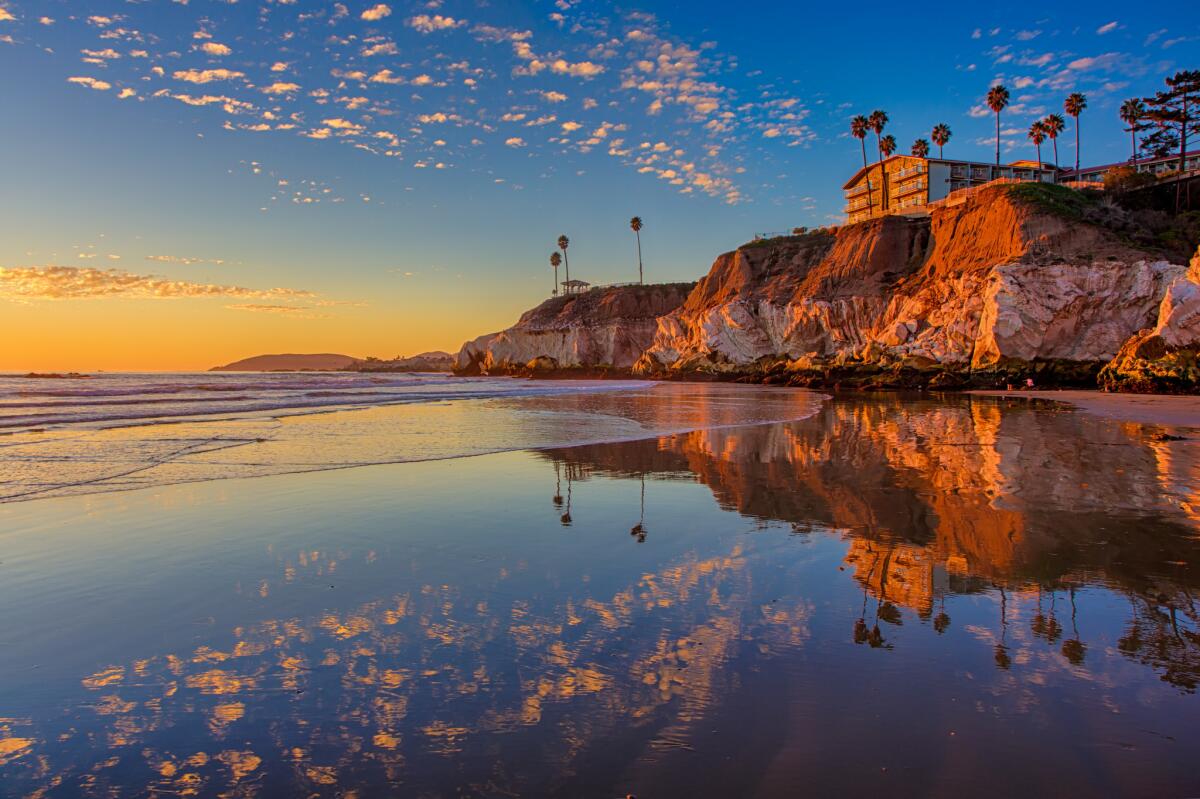
The route: Los Angeles to the Clark Avenue/Orcutt exit on U.S.101 (just below Santa Maria), west to California 1, north on Highway 1 to Pismo Beach.
Miles: About 420 miles round trip from Los Angeles; Orcutt to Pismo Beach, 30 miles.
Best time: Good year-round, but it can get chilly so check the weather forecast.
Why: This easy side trip off the 101 on the way to San Luis Obispo lets you continue the journey north through farmland, picturesque small towns, sprawling sand dunes and more.
Highlights: The first half of the drive takes you through farmland with rolling hills; the second half leads into eucalyptus groves. In Orcutt, grab wine and sandwiches at Old Town Market for a picnic. Stop in Guadalupe, a town frozen in time, to visit the Guadalupe-Nipomo Dunes Center for an orientation before heading west of town to the Rancho Guadalupe Dunes Preserve. At Oso Flaco Lake, take the boardwalk over the water to the dunes and beach. Follow the beach to the Guadalupe-Nipomo Dunes National Wildlife Refuge for bird watching. Oceano Dunes Natural Preserve is a playground for off-road-vehicle enthusiasts; you can rent a dune buggy or ATV and play Mario Andretti on the sand.
Memorable stay: Near Orcutt, the Radisson Hotel Santa Maria overlooks the tiny Santa Maria Airport and has a lounge with views of the runway. On the Pismo Beach end, I like to drive several miles farther to Sycamore Mineral Springs Resort & Spa in the Avila Valley to soak in the private hot mineral spring tubs that come with each room.
Memorable meal: For such a tiny town, Guadalupe is bursting with good Mexican food. We hit the family-run eatery El Tapatio (914 Guadalupe St.; [805] 343-2850, no website), which is packed at lunch and sells takeout to local field workers. We stuffed ourselves with delicious chicken tacos and shredded beef burritos.
Tourist trap or treat: The Guadalupe-Nipomoa Dunes Center, an unexpected treat, features an exhibit of Cecil B. DeMille’s “City of the Pharaoh” set from his 1923 silent film epic “The Ten Commandments.” The set was dismantled and buried in the dunes, where it remained hidden until 1983.
Plan to spend: About eight hours. Bring a camera and visit the dunes center, explore the dunes, then grab lunch.
—Irene Lechowitzky
Million-Dollar Colorado Landscapes
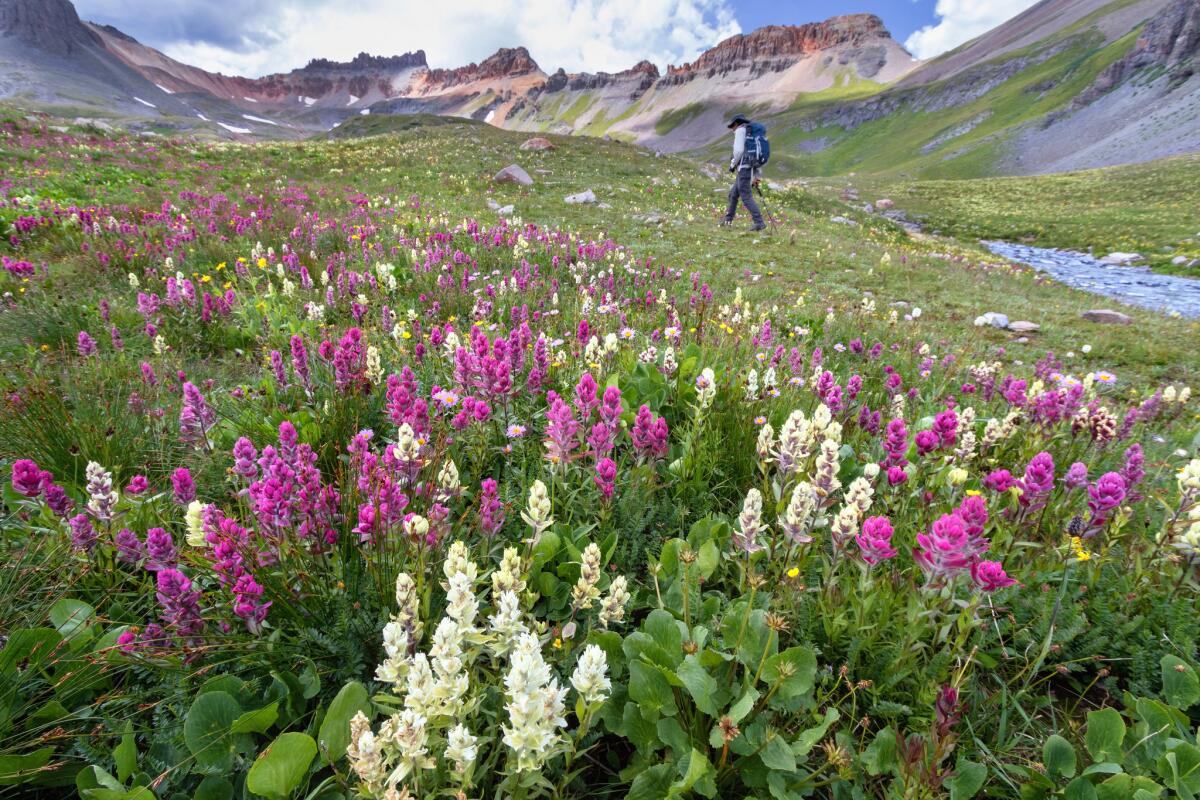
The route: Durango to Grand Junction, Colo., on U.S. 550 to 50
Miles: 167 miles one way
Best time: Midsummer, when wildflowers run riot.
Why: The awe-inspiring photo opportunities amid the rusted-saw peaks of the San Juan Mountains aren’t the only reason the 550 is called the Million Dollar Highway. This is silver country, and the boom brought the quaint Victorian homes (and scrappy, enterprising residents) that charm modern-day visitors to the mountain towns of this rugged range north of Durango. After switchbacks over three passes, the road straightens on the far side of the range where the terrain transitions; the canyon lands and Bookcliffs around Grand Junction resemble Utah more than the Rockies.
Highlights: In Silverton, detour to Ice Lake Basin for a hike (3.4 miles one way; strenuous) to turquoise waters ringed by castellated peaks. Catch happy hour in Palisade, Colorado’s little corner of wine country adjacent to Grand Junction, for sangria at the laid-back Red Fox Cellars, where dusty hiking boots are welcome.
Memorable stay: Durango’s Strater Hotel, where western author Louis L’Amour spent time penning stories in Room 222 every year. Aspiring writers can request the room, but it’s popular so book well in advance.
Memorable meal: Does chocolate count as a meal? It should at Mouse’s Chocolates in Ouray. The truffles and caramels shine, but the showstopper is the scrap cookie, a mystery sugar cookie mixed with leftovers from the day’s confection-making. For dinner, drop into Grand Junction’s Bin 707 Foodbar for farm-to-table fare that changes with the seasons.
Tourist traps or treats: On the Fourth of July, a parade of jeeps, decked out with lights and decorations, winds into Ouray. (The people driving them don costumes too.) After the parade, watch colorful fireworks burst over the peaks surrounding the town and echo against the walls of the box canyon. Road-trippers who visit in August will want to stop in Palisade for a crate of the enormous, drip-down-your-arm Kokopelli peaches the town is known for.
Plan to spend: About 4½ hours with stops for photographs; eight or nine hours if you stop to hike along the way.
—Jenn Fields
From Denver to Sandy Peak Experiences
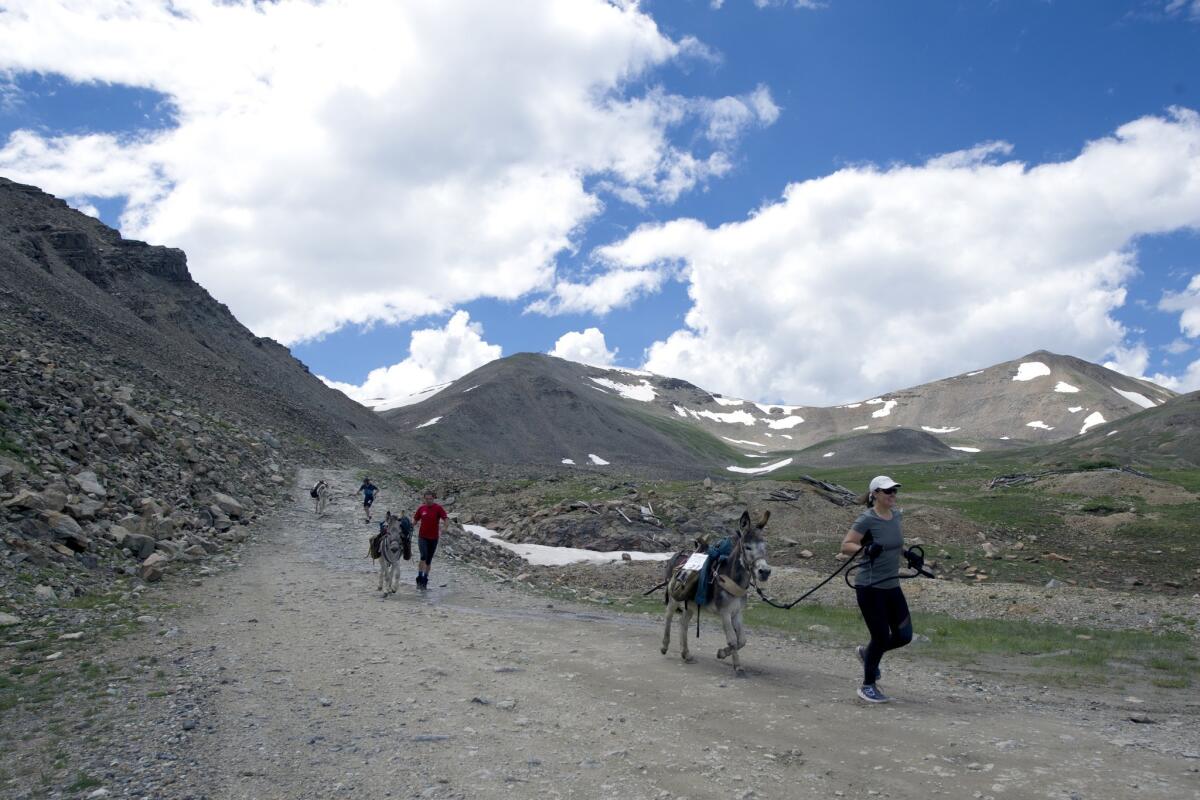
The route: Denver to Great Sand Dunes National Park on U.S. 285
Miles: 226 one way
Best time: Early summer, when enough water trickles in front of the sand dunes to create an out-of-place beach.
Why: Taking U.S. 285 deep into the mountains is an act that’s peak Colorado: This route crosses the windswept expanse of South Park (a real place, not just a cartoon), breezes by some of the state’s tallest summits and, just like the locals, avoids Interstate 70, a busy route into the high country. Passing through on July 29 demands a stop in Fairplay to witness the world championship of burro racing at Burro Days, whereby seemingly reasonable people will trail run many miles over mountain passes with a pack burro in tow. That’s also peak Colorado.
Highlights: Fourteeners, peaks that exceed 14,000 feet, dominate the western horizon along the stretch of highway between Buena Vista and Poncha Springs. If you have time to hike one, divert north to Leadville, start before sunup and try Colorado’s highest, Mt. Elbert. To the south, at Great Sand Dunes National Park, prevailing winds push sand against a different range of fourteeners, Sangre de Cristos. The dunes can tower as much as 700 feet above the valley floor.
Memorable stay: Piñon Flats Campground, in the national park, has some of the best views of the dunes and just might be the best place to pitch a tent in a state with spectacular camping options. Need a roof over your head? The Palace Hotel in Salida has historic flair and modern comforts, and you can walk to this hopping downtown’s restaurants and mountain-casual boutiques (this isn’t Aspen).
Memorable meal: Stop in Denver Central Market to gather bespoke provisions, such as artisan bread, charcuterie and cheeses, to enhance that night’s campsite dinner; a quick avocado toast and coffee at the market will start you on the right foot. En route, stop at Amicas in Salida for a properly relaxed pizza and beer for lunch. The green chile ale is a local classic.
Tourist traps or treats: Check the schedule of the Rocky Mountain Land Library, which is refurbishing a ranch near Garo, Colo., in South Park. The nonprofit hosts events in summer that mix nature and artistic and intellectual endeavors.
Plan to spend: Six hours with stops for photos, craft beer and a possible alien encounter.
—Jenn Fields
World-Class Wines in Rural Oregon
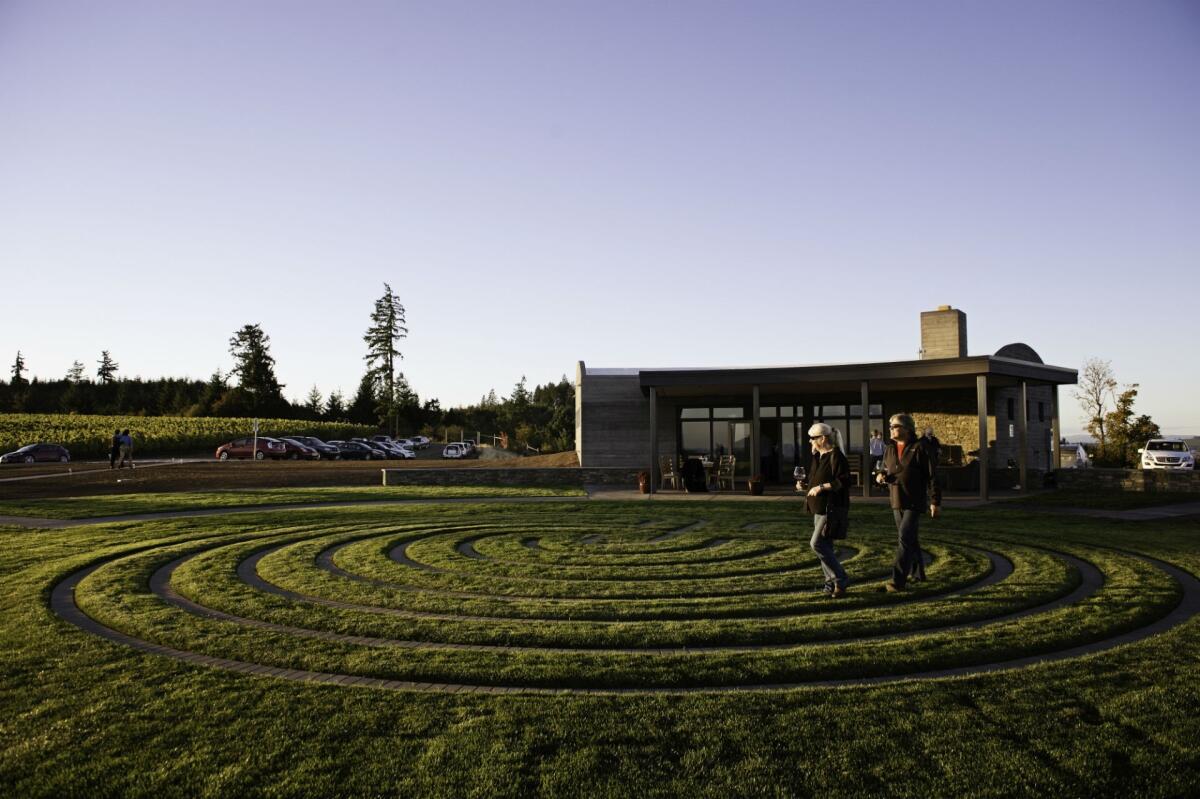
The route: Loop from Portland, Ore., west on U.S. 26, a short jog on Oregon 6 past Banks and south on Oregon 47 to McMinnville as your destination, then northeast on Oregon 99W back to Portland.
Miles: About 98 miles
Best time: This is a year-round destination, but expect bigger crowds to accompany summer weather. Weekends around Memorial Day and Thanksgiving are busy.Why: The undulating drive south on Oregon 47 takes you past mowed hayfields and vineyards and into Oregon wine country and one of the state’s most scenic downtowns in McMinnville.
Highlights: Stop for wine and to enjoy the incredible hilltop view at Fairsing Vineyard near the farming town of Yamhill. Take another slight detour to neighboring Carlton for the baked-from-scratch goods at Carlton Bakery. Carlton calls itself, simply and accurately “a great little town,” and you can walk around and sample wine from Flâneur Wines and others. To satisfy the flâneur within you, stroll around McMinnville, with its two-story brick buildings populated by a bookstore, a tea shop, a bike shop, the kind of downtown you thought no longer existed. More wine here as well at Willamette Valley Vineyards, R. Stuart & Co. and many more.
Memorable stay: An aggregation of small things creates a
Memorable meal: For breakfast, grab a seat at Community Plate in McMinnville and kick-start the day with an egg scramble, fluffy pancakes and fresh-squeezed orange juice. Later, stop for piping-hot paella cooked to order and a glass or two of sangria at McMinnville’s La Rambla.
Tourist trap or treat: This is rural Oregon at its best, with world-class wines and a small-town feel. All treat.
Plan to spend: It’s about 2½ hours in the car without stops and detours. But figure on spending a night or two in or around McMinnville to enjoy the views, the wine and more.
—Alex Pulaski
Seattle to Little Bavaria Is Little Fuss
The route: U.S. 2 from Seattle east through the Cascades to Leavenworth. The trip can also be made on Amtrak.
Miles: About 117 miles one way.
Best time: Winter, for holiday lights (beware of crowd warning below), or summer for outdoor adventures.
Why: The picturesque Bavarian village of Leavenworth, about 120 miles east of Seattle, gilds itself in Christmas lights each winter and welcomes visitors to a winter wonderland. In late spring and summer visitors are drawn to white-water rafting on the Icicle and Wenatchee rivers. Leavenworth, a onetime mining town, remade itself in this Bavarian image in the 1960s to draw tourists and has never looked back, bringing in 2 million visitors a year.
Highlights: Make your first stop — and come back on your way out of town — the Bavarian Bakery, and pray mightily that owner and baker Berthold Timmerman coaxed an apple strudel or marzipan stollen from the oven a half-hour before. In town, picture a lesser version of Salzburg, with shops such as Kris Kringl (holiday trinkets) and Cured (meats and cheeses). Wine tasting has become a dominant business, with more than 20 tasting rooms. Boudreaux Cellars shares space with a home-goods store and a tail-wagging black Labrador. Plain Cellars has a pleasant mix of reds, dessert wines and cider, and a knowledgeable and friendly to guide you through them. On the winding drive to or from Leavenworth, stop for coffee at the micro-sized Espresso Chalet in Index. And if the weather is cooperating, watch for roadside turnouts near Baring. Then follow the short trails down to the lovely boulder-strewn Eagle Falls on the south fork of the Skykomish River.
Memorable stay: The clean and comfortable Bavarian Lodge has 90 ski-lodge-themed rooms and is centrally located. You can see and photograph the town’s holiday lights from your room’s balcony or window.
Memorable meal: Sit outdoors at the Munchen Haus bier garten under an umbrella (or near one of the heaters in winter) with a mustard-covered Big “Bob” Bratwurst in one hand and a stein of Icicle Pilsner in the other.
Tourist trap or treat: Locals warned me that during the winter weekends before and around Christmas the town becomes a victim of its own popularity, with jammed roads and restaurants. We visited just after New Year’s and got the lights without the lines.
Plan to spend: The drive from Seattle consumes nearly three hours, but you will want to spend a night or two to try wines, beers and sausage and visit the outdoors.
—Alex Pulaski
Sign up for The Wild
We’ll help you find the best places to hike, bike and run, as well as the perfect silent spots for meditation and yoga.
You may occasionally receive promotional content from the Los Angeles Times.



